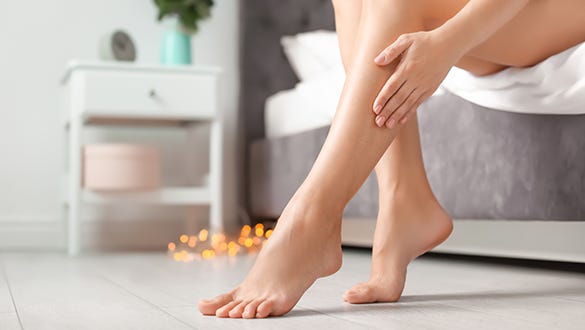- Free First Class Delivery
- Buyer Protection
- Secure Online Shopping
- Healthcare Professional? Click here
Healthy legs


Categories
Show your legs
In almost a quarter of the population aged 18 to 79, the leg veins grow weary at some time or other (Bonn Vein Study II). The result: spider veins, stretch marks, and varicose veins. But: the dream of strong healthy legs can still become reality with compression stockings, sport and minor surgical procedures.
Compression therapy
If your doctor has diagnosed venous disease, he will first prescribe compression stockings for you. Don't worry. These days they look just like normal stockings and are comfortable to wear. Their job is to reduce the diameter of the leg veins. The result: the flow of blood back to the heart is accelerated, the venous valve system works again and the development of further spider veins, varicose veins and stretch marks is prevented. There are four compression classes that are used depending on the degree of disease. The main difference between these is the firmness of the material, i.e. the pressure that is exerted on the veins. Your doctor will decide which compression class you need.
Varicose veins
Varicose veins are distended convoluted leg veins that run like bead-shaped cords under the skin surface. They don't just look disfiguring, they are also a health risk. So away with them! The most common surgical procedure is "stripping": the diseased vein is simply pulled out with a probe. In the CHIVA method, the distended veins are ligated (tied up), so that the blood can flow through the healthy collateral veins. In laser and radio wave therapy, the insides of the veins are melted by a laser or sclerosed by heating with radio waves. The so-called sclerotherapy uses an injection to cause the vessel walls to stick together. With laser, radio wave and sclerotherapy, the inactive veins are not pulled out, but are absorbed by the body's own processes. Immediately after the operative procedure, a compressive anti-embolism stocking is worn (e.g. mediven struva). After this, medical compression stockings (e.g. mediven elegance) are mandatory.
Spider veins
Spider veins are thin red or bluish blood vessels just under the surface of the skin. They are usually a few millimetres long and criss-cross over the leg and thigh like roads on a map. In most cases, they are more of a cosmetic nuisance than a medical problem. Nevertheless, you should still have them examined by a doctor, because spider veins can be a sign of deeper varicose veins or even early vein disease. If your spider veins turn out to be harmless venous changes, they can be eliminated by sclerosis or laser therapy.
Sport
Weak veins are to a large extent hereditary. But whether varicose veins develop or not, depends most of all on how fit you keep your veins. And we mean this literally: the vein walls remain elastic when the musculature surrounding them is regularly exercised. If you already wear compression stockings for venous disease, you should also wear these for sports.
How can my legs stay healthier for longer?
You can basically prevent varicose veins and spider veins by wearing medical compression stockings. This can be extremely useful, particularly after vein surgery, in the case of hereditary connective tissue laxity, when your job involves a lot of standing, chronic constipation or during pregnancy. But please only after consulting your doctor! Because compression stockings are more likely to be counterproductive for certain skin diseases, heart problems or polyarthritis.
And you can do even more for legs in your day-to-day life:
- Get as much exercise as you can.
- Change position more often, put your legs up every now and again.
- Stick to a light, balanced diet.
- Lose any excess weight.
- Wear loose, comfortable clothes.
- Choose flat shoes.
- Shower your feet regularly with cold water and have hot and cold showers.
- Plan regular 10 minute sessions of vein exercises into your daily routine.
















